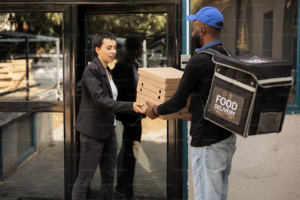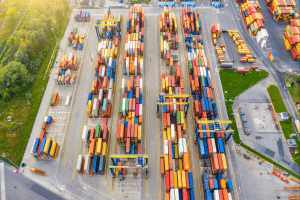Trends for the year ahead in mapping, geospatial, and more, as per John Kimmance, Managing Director of National Mapping Services, Ordnance Survey.
Vital Location Component
The role of location in supporting solutions for sustainability is becoming increasingly critical as the planet tries to understand the ongoing impact of climate change. OS already has a proven track record in innovating and partnering with sustainability initiatives.
At one level, we have the Supply Chain Data Partnership, of which OS was a founding member, looking to improve transparency in the supply chain globally. Then in Britain, we have examples of how OS is working with public sector customers on national and local sustainability projects.
One such example is the Greater Manchester Ecology Unit, where its adoption of the OS NGD has enabled huge advances in mapping natural habitats for its Local Nature Recovery Strategy.
One of the most significant impacts of climate change is flooding, with a greater risk to communities in coastal and lower-lying areas. Accurate location data is vital for the prevention, planning, response, and recovery of these incidents and OS has a long history of supporting local authorities and emergencies in this.
Most recently, OS played a role in a storm and flooding exercise with Local Resilience Forums and emergency services, where the crucial question everyone wanted an answer to was where. OS remains on call 24/7 with its mapping for emergency service, whether for a natural emergency or security threat.
Continued AI Adoption
Continued focus on AI is significant for businesses and the geospatial industry. And with that, people are going to look for trusted organizations to underpin their understanding and decision-making with authoritative data.
For a number of years, OS has been researching and piloting AI and Machine Learning within OS, which is centered on our data capture operations and how we can use the technology to deliver richer specifications and more timely data to support our customers.
Two examples are automated change detection and automated feature extraction. Through projects in both Great Britain and overseas (Zambia) we have seen the benefit that these technological advances can bring to our data capture operations. As well as the benefits which are passed on to our customers.
This year will see AI further embedded, playing a significant role in the creation of some of our new products in 2024.
Embracing Transformation
All businesses and organisations, whether private or public sector, need to continually change and embrace new technologies. In recent years, OS has transformed how our data is stored, accessed, and used by our customers through the NGD.
While we have already seen customers using and getting value from new products and services, there are users still to adopt the NGD within their organisations. I would urge any interested customers to contact us and we can support them on their geospatial journey.
I would also like to see greater recognition of the importance of location in large infrastructure projects. It is often considered far too late in the process, as there is still a limited awareness of the significance of geospatial data amongst non-specialists.
One example of this is the ongoing roll-out of 5G networks. How can providers ensure that all areas of the country and communities can benefit rather than select cities and towns?
We believe location can enable more effective planning and delivery, from optimising the location of assets to understanding the population and movement of citizens.








